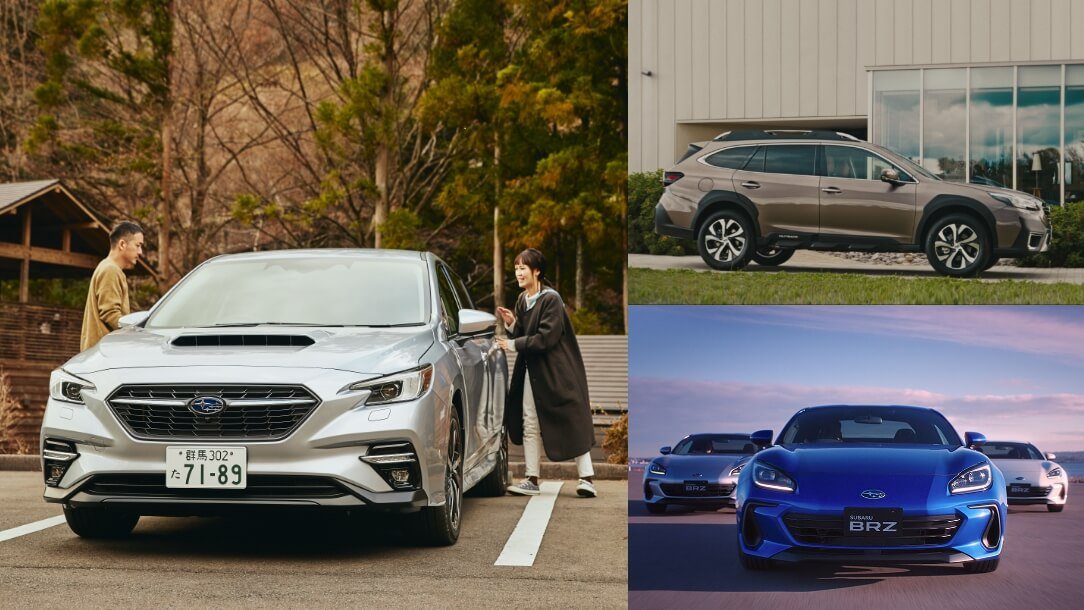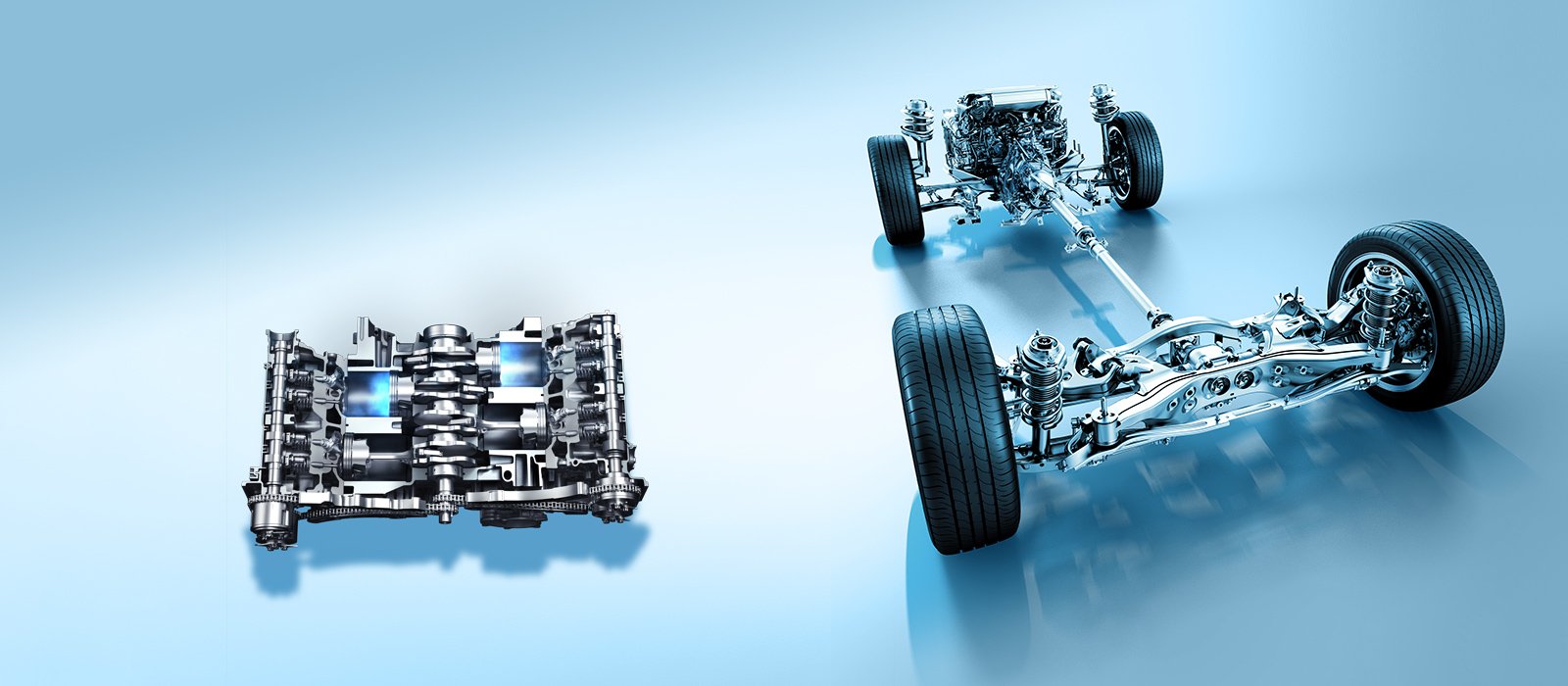What Will Happen To Subaru's Legendary AWD System?
Image via Subaru JP
What will happen to Subaru's legendary all-wheel drive system as they begin mass producing fully electric vehicles? Subaru's all-wheel drive is the stuff of legend. In many ways, Subaru is responsible for the widespread adoption of all-wheel drive vehicles for the everyday driver. They are affordable, reliable, and seemingly capable of traversing any terrain during any driving conditions, given the proper equipment. No modifications needed (unless you count tires).
All-wheel drive systems differ from the manually activated four-wheel drive alternatives found in more traditional cars in that the 4WD capabilities are always active, making them more user-friendly and more efficient for road use during scenarios where extraordinary traction is not needed. Although, when traction loss beings to occur, an all-wheel drive system can automatically regain control. Subaru has championed this technology since the mid-1990s, and to this day retains a reputation for manufacturing the best, most reliable, symmetrical (50/50) all-wheel drive systems on the market.
The Subaru Impreza WRX STI is noted in particular because of its advanced torque vectoring system designed for a driver to adjust manually while the vehicle is traveling at any speed. This system has made the Impreza one of, if not the greatest rally racing vehicles of all time and has achieved 47 victories competing in the World Rally Championship as proof. A variant of the STI’s torque vectoring control was later adapted for the more casual driver in the form of “X-Mode” for offroading use in Subaru’s automatic, eyesight-equipped commuter cars.
Subaru's AWD (All-Wheel-Drive) system and horizontally opposed engine are two key features that set the brand apart. Subaru's AWD ensures exceptional traction and stability by distributing power to all four wheels. This system provides increased safety, especially in challenging weather or off-road situations. Additionally, Subaru's horizontally opposed engine, also known as a boxer engine, offers a unique design with cylinders arranged in a flat, side-by-side configuration. This configuration helps to lower the vehicle's center of gravity, resulting in improved balance, handling, and overall stability. Image via Subaru JP
How Does An All-Wheel Drive System Work?
For those that don't know how an all-wheel drive system works, a brief explanation may be helpful. During regular use (on a public street, for example), the car is pulled primarily by the front axles where approximately 90% of the engine's available torque is transferred from the car's transmission, which is adjoined with a center differential, to the front axles/wheels. This front-end-dominant distribution of power allows the car to attain its highest fuel efficiency during casual use. However, as a Subaru struggles to gain traction on wet roads, gravel, on snow or ice, or during aggressive performance driving, the car's ECU (electronic control unit) is capable of making automatic adjustments in real-time, splitting the torque between the front and rear differentials by up to 50/50 division of power.
The overwhelming majority of all-wheel drive systems on the market today are incapable of 50% torque to the rear axles (otherwise known as symmetrical all-wheel drive) and instead are only capable of distributing a maximum of ~20% torque to the rear axles, which means in the absence of that ~30% torque to the car’s rear, a Honda CR-V, a Volvo XC, or Volkswagen Atlas, etc. will fail in low traction conditions where a Subaru will succeed. Subaru’s all-wheel drive system was originally adapted from the legendary Nissan R32 GT-R (which is a very high-performance sports car), and variations of this system are also found in other performance model cars like the Ford Focus RS or the Mitsubishi Lancer Evolution. However, every modern Subaru (with the exception of the rear-wheel drive BRZ) is equipped with this extremely reliable and affordable all-wheel drive system.
But, What About Electric?
Alas, in June 2023, Subaru has changed leadership with its new CEO, Atsushi Osaki, and is now committing much of its available resources to the production of electric vehicles despite their initial hesitancy to do so. As you may know, electric vehicles do not utilize a traditional drivetrain the way that a standard combustion-powered car does. This means that there is no crankshaft, no gearbox transmission, no center differential, and no rear differential in a fully electric all-wheel drive system. Products like Tesla Inc.’s Dual Motor All-Wheel Drive System make use of twin electric motors which have similar capabilities to Subaru's Symmetrical AWD, although the means of power delivery is very different. We can see their early prototype system in Subaru's first battery electric vehicle, the midsize SUV known as the ‘Solterra’. While the Solterra is equipped with considerably more computer-automated functions than a traditional Subaru, it is unclear if Subaru's electric all-wheel drive system can live up to the legendary reputation of its predecessors.
Perhaps this is why Fuji Heavy Industries (also known as Subaru) has been hesitant to adopt electric vehicles; because the company can attribute much of its modern-day success to its reigning all-wheel drive supremacy. By making otherwise inaccessible locations accessible via ill-maintained forest roads and treacherous mountainsides; even a low-skill driver can traverse uneasy terrain. It will be difficult for a mid-sized Japanese manufacturer with no history in battery electric vehicles to turn out the most elite direct-drive all-wheel drive system with its limited resources and partial focus on EV’s. This is a daunting task for Subaru's engineers who would seek to maintain the well earned reputation that, “Subaru produces the best all-wheel drive system in the world.”
Personally, I would like to see a traditional symmetrical all-wheel drive system equipped with a manual transmission gearbox, powered by a large electric motor; so as to continue the already well-established and well-respected, tried and tested mechanical achievement that Subaru owners have grown to love. While direct-drive does offer unprecedented torque output at low speeds, it remains a rather unexplored design amidst such a rich heritage of automobile enthusiasm. It remains unclear that a direct-drive system is ideal for low-traction environments, off-road applications, or high-level motorsport competition like the World Rally Championship.
A “new meets old” fully electric or hybrid STI could not only be reliable (although higher maintenance), but it would be far more invigorating to drive than a computerized dual-motor Tesla or ‘Solterra,’ in my opinion. Let us know, Subaru, if you plan to experiment with any such designs and would like this STI lover to have a go at it on the track.


